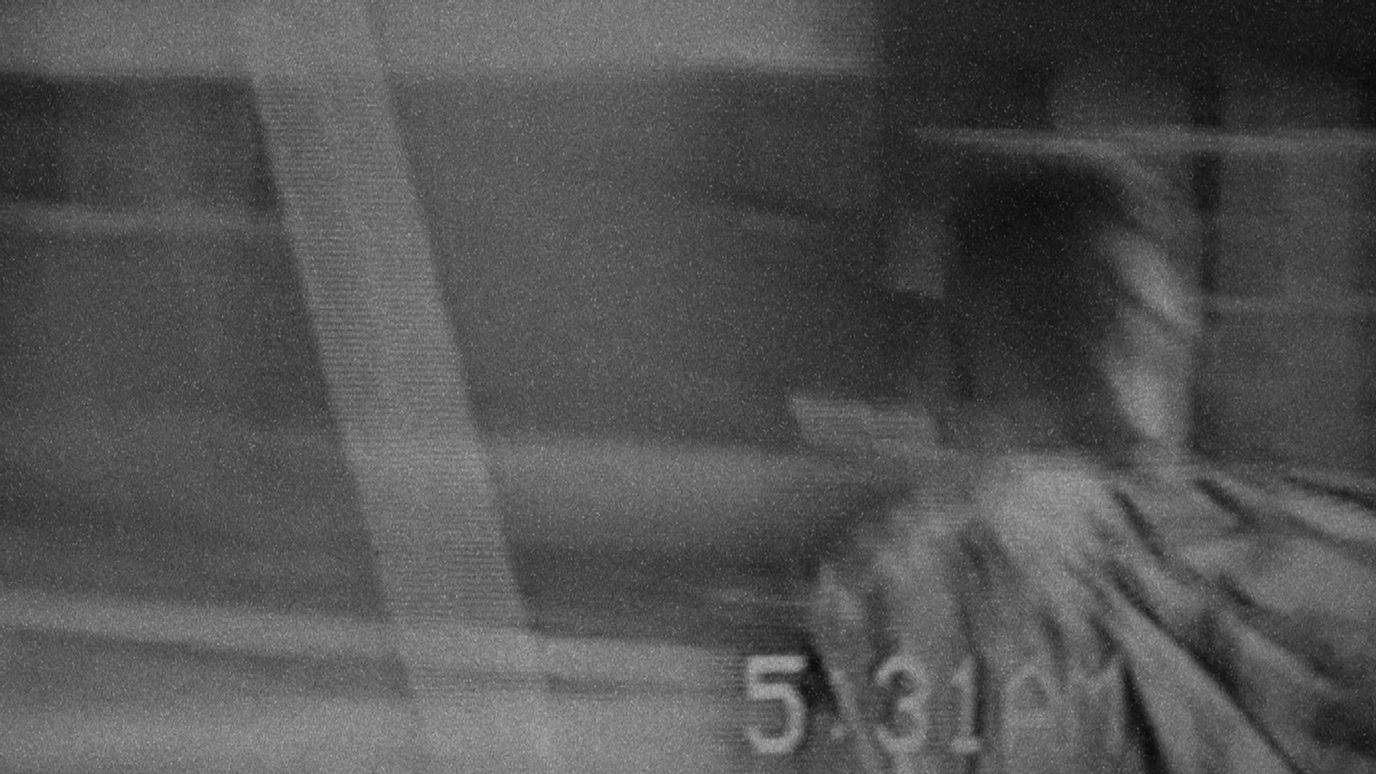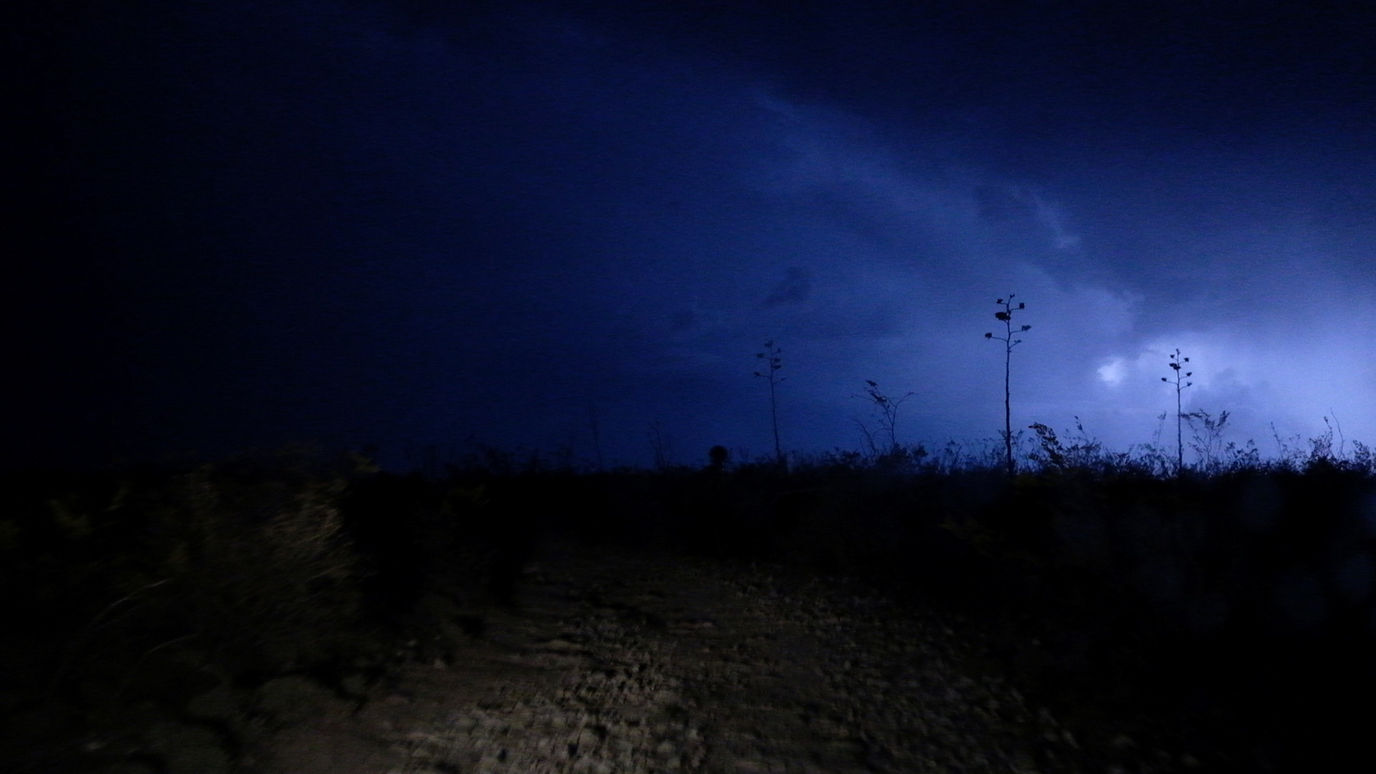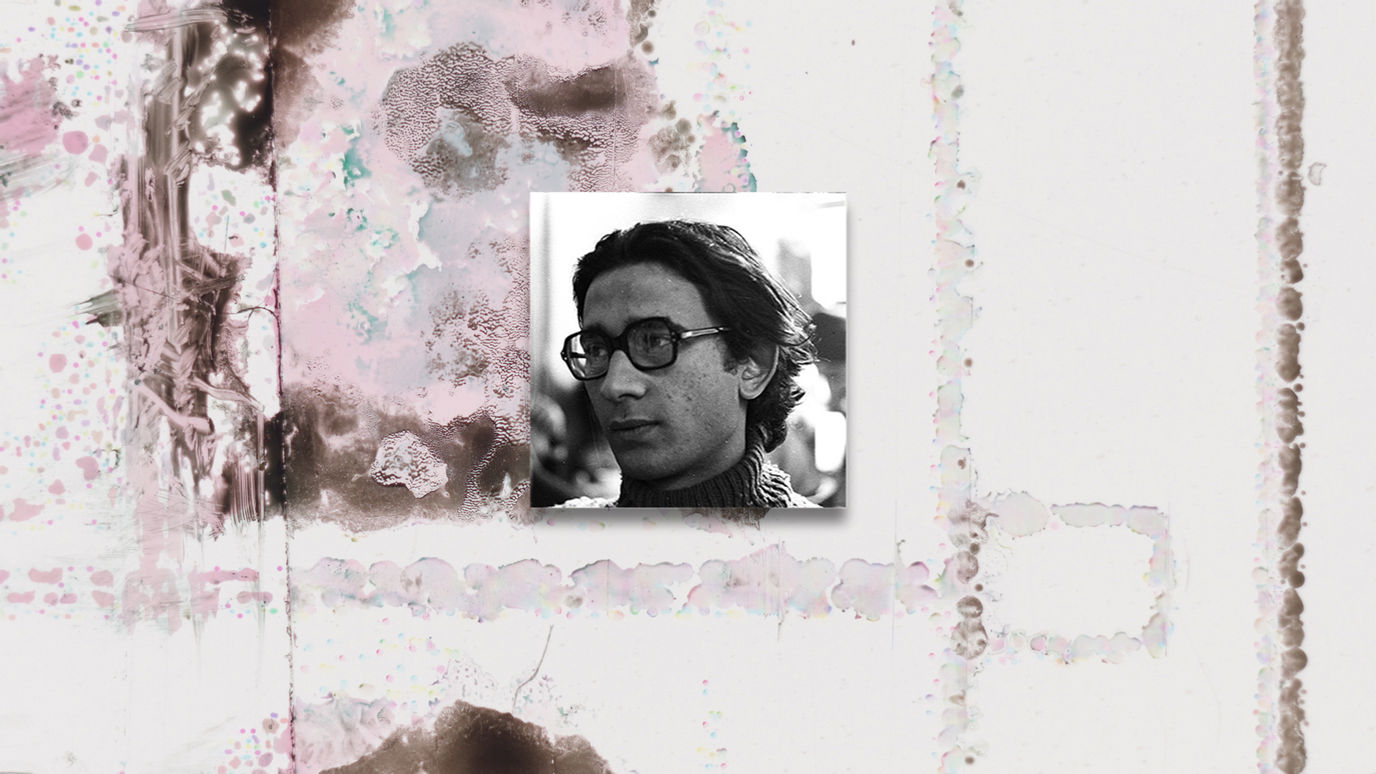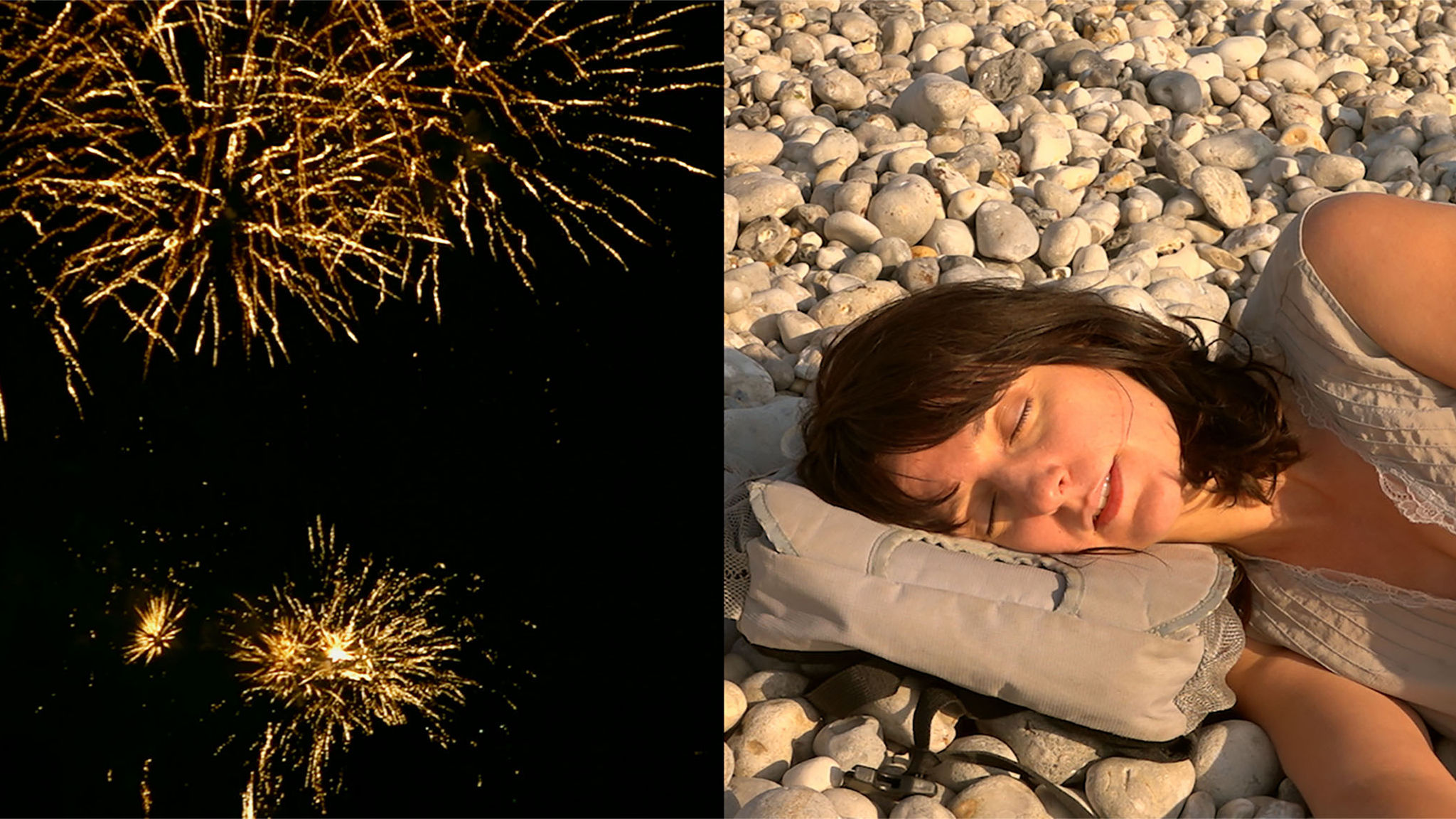Dispatch from a digitalised world: IFFR 2021
I find myself in the very strange position of starting a piece with a personal reflection. It’s not something that I often do, even though I always appreciate writers who lay their hearts out bare in their work. Maybe it’s the fact that I’m a graduate of journalism studies rather than film studies, and so I’ve been trained to subdue, or even outright stifle out my subjectivity in my work, to focus as much as possible on bare facts and observations. But the past few months have been a space for reflection for me, a way to sort out my exhaustion after a year that has been traumatizing not just for myself, but for global society as a whole – and maybe the fact that last year I wrote comparatively little to the previous years is also prompting me to lay down these words.
It’s time to be very honest: I’ve been having a hard time concentrating on films lately. And it’s not just me – it’s just about every friend I have lately felt comfortable enough to talk about this. I’m aware that it’s just about the most “first-world problem” that I can complain about in times of global tragedy and restlessness, but it feels like I am missing a limb. Let’s face it: we are all burned out from our digitalized lives, living from one news cycle to the next, our social media offering both unprecedented levels of bile and rage, and, sometimes, rarely, the sense of community which they purport as their raison d’etre. And, in between these two pillars, the beast that is the Internet, and its billions upon billions of hours of rabbit holes. (Rumors of Armie Hammer being a cannibal? AOC streaming Among Us on Twitch? $GME to the moon? Stonks.)
However, all of this has led me to the following conclusion: it is not, alas, Netflix, nor Disney, nor Marvel that is the death knell of arthouse cinema as we know it. The death of cinema is the so-called attention economy. And how could it not be, given the extraordinary circumstances that we find ourselves in, with our phones and computers serving oftentimes as our sole lifelines to the exterior world as the pandemic fatigue is taking over? How can anyone properly concentrate on properly watching a film and forcing themselves to enjoy it if they’re not easily captivating when that little sliver of anxiety makes us grab onto our phones for dear life, scrolling apps that are designed to be addictive, exposed to such a huge amount of information that our mind is not probably even equipped to process? We might have massively underestimated our resilience in a situation in which tangible connections to social life, community, and political engagement have been brutally severed, or could be practiced only with the knowledge of an imminent threat hovering over our heads.

Online festivals proved to be a novel solution throughout 2020 – and, despite various systems of availability, did prove one major advantage: namely, critics, curators, and cinephiles no longer needed to take expensive trips to gain (timely) access to films -, keeping the industry afloat and soothing the still-fresh shock of the collapse of the entire event economy. But, by now, meaning the point in which we are entering the second year of the pandemic, they’re almost frustrating. Even more so that most people working in cinema know that producers and distributors have, for the most part, hit the emergency brakes on the release of major films (some known, from the eternally delayed Bond film to Apichatpong Weerasethakul’s Memoria, others only rumored-about) and whatever is due to crop up on an online festival is probably going to be underwhelming. (It still remains to be seen if this year’s Berlinale will prove to be a paradigmatic change, as the only one of the three major festivals that has chosen to migrate online, albeit only for industry and press at its March summit.) Of course, one must wonder what kind of choices this state of affairs poses for the lead curators of any given festival – even though many festivals have decided to noticeably trim down their selections (as was the case with this year’s IFFR, which stripped away several short film competitions and its retrospectives for the time being), the initial showing of solidarity of some filmmakers who decided to still show their films during the pandemic seems to have mostly fizzled out. Everyone’s holding out for the vaccine – which, as of yet, has been frustratingly slow to roll out, and people’s patience seems to be drying out.
All of which brings us to this year’s outing of the International Film Festival of Rotterdam (IFFR) – and one final thing readers must keep in mind is that Rotterdam is the latest major European festival to undergo a reshuffling of its artistic team (after the Berlinale, Locarno twice over, the Biennale and FIDMarseille) in the tectonic shifts that have lately impacted the festival circuit. Shadowing over Bero Beyer’s final edition at the helm of the festival last year, Vanja Kaludjercic (MUBI UK’s former head of acquisitions and ex-programmer of Sarajevo FF) has fully stepped into her role as festival director this year, which is also an anniversary one, making its 50th outing – and Kaludjercic’s maiden edition. However, by taking a look at the festival’s selection at large and extending the benefit of doubt due to the shuttered-off pipeline of films, it’s been so far hard to discern what this edition’s curatorial vision was, beyond a clear insistence on films which were directed by women, or which approached female-specific issues as their main topic matter. Something which, of course, is laudable – haven’t we all been cheering on for this to happen, in the feminist awakening of the years past? – but which also runs a new, perilous risk: that of female-centered cinema becoming tokenized and no longer delivering its messages with their intended urgency, of our sensibility towards such films dulling down.
Obviously, this is not to say that festivals should avoid selecting such films (quite the contrary), but choosing films that seem to hesitate on this topic, to simply bank on it, or that are lacking in any other respect, acts as a blow to such noble missions – and unfortunately, this year’s Ammodo Tiger short film competition (which is the experimental film community’s flagship yearly crop, and which arguably sets in motion some of the most circulated short films of the season within the festival economy; as such, I will be mainly focusing on it here) has many such offerings. One such example is Sui Hui-yu’s The Women’s Revenge, which, while seemingly operating as a homage to an obscure genre of Taiwanese exploitation films, offers little more than 16 minutes of highly stylized women slaughtering a group of men in various highly aestheticized positions. (The ending of the film does hint at the fact that women are still mostly trapped within objectifying representations, but it is too little, too late – and, contrary to some beliefs, I find nothing emancipatory in seeing images of women or other minorities turning into the oppressors for once.) Pom Bunsermvicha’s Lemongrass Girl (scripted by the festival darling Anocha Suwichakornpong) is a day-in-the-life on a film set whose production is complicated by the fact that the script requires a woman planting lemongrass, and local misogynistic superstitions mean that almost none of the women in set qualify for the act. While being a straightforward narrative film (a rare sight in Rotterdam’s short film sidebars), Lemongrass Girl’s opaque realist aesthetic unfortunately turns the short into a shallow one-trick-pony, even though the underlying theme is anything but: mythos and the idea of one’s power over natural phenomena. However, in a lone highlight, Félix Blume’s Luces del deserto takes an extremely similar topic matter and pulls it off in a short film that is both formally rigorous and ingenious – constructed from imagery of various types of lights roaming the pitch-dark Mexican countryside, the film’s voice-over, constructed from various testimonies, tells various urban legends regarding demonic women that materialize from the light, or various wild animals.

Ruth Höflich’s Plant (879 pages, 33 days) observes an elderly researcher studying the case of a woman who was once tried and executed for being a witch in the 18th century, yet its elliptic structure and anti-aestheticizing cinematography fail to construct engagement and deeper reflection on the topic of witchcraft (like in, say, Jyoti Mistry’s 2020 Cause of Death); Laura Weissenberger’s Erde essen comes across as little more than a collage of some rather randomly-chosen stories of women with the image of a child bride that eats clumps of earth and repeatedly jumps into her bed; both films seem to set themselves high aims that they fail to reach. Other films seem to simply seem to beg the question “Why does this film exist?” – as Việt Vũ’s The Eternal Springtime, which just shows documentary footage of an elderly woman descending to what seems to be a very dangerous underground cave (!!!) while a voice-over sporadically interrupts the footage with some platitudes about interhuman connection, while Ghita Skali’s satirical The Hole’s Journey looks and feels just like an Adobe Flash Animation made for the culturally-defunct Newgrounds platform. One film, in particular, is striking in its approach of a gender-based issue – domestic life – especially within the context of the pandemic: Newsha Tavakolian’s Flowers blooming in our throats (see featured image), a (post?) lockdown film that traces various small repetitive gestures of women within their homes, revealing both a sense of suffocation and inherent violence to their actions, all the more so relevant in the light of the pandemic’s particular effect on women; a film made in a workshop that also produced Basir Mahmood’s Tiger Award winner Sunsets, Everyday, which has a more frontal approach of the topic of rising domestic violence rates during the lockdown, yet has one major caveat: some of the protagonists of the film are seemingly not adhering to anti-Covid safety measures and seem exposed, which, to me at least, made the film unpalatable.
The pandemic also reared its head in some of the films showcased in the Ammodo Tiger Competition – while only limited to just a small number of films, it’s an indication of the fact that representations of our current crisis are slowly waking their ways up onto our screens. It’s most noticeable in Catarina de Sousa and Nick Tyson’s Tracing Utopia, which features footage from last year’s Black Lives Matter protests, a heavily digital aesthetic that relies on digital communication (webcam screens of the protagonists feature heavily in the film’s first part) and virtual spaces (which, here, is a garden constructed in the popular Minecraft video game). Although timely in terms of topicality and aesthetics, Tracing Utopia lacks however in making a clear point: the film’s protagonists, five transgender children at the age of puberty, are shown at first expressing their thoughts and ideas about trans rights and what sort of systemic, societal measures they would like to see in an ideal world for their community; the film then dissolves into said protagonists playing around in Minecraft (to make the point of a digital safe space, I assume?) and rapidly loses its momentum from that point onward; what could otherwise be a bold film in terms of its mixed-media digital approach and its discourse on trans rights gets lost along the way as the filmmakers, who make sporadic appearances, seem unable (or, even worse, unwilling) to rein in their protagonists or to create a coherent line of interaction with them.

In what regards aesthetics, no major direction is discernible in the selection at large, beyond the prevalence essay-film format, which is a staple of experimental filmmaking – and which is successfully used in titles such as the aforementioned Luces del Deserto, as well as in three more of the sidebar’s strongest offerings. The first, Morgan Quaintance’s Surviving You, Always, which clashes the romanticization of LSD in high culture with the filmmaker’s harrowing personal experiences with the drug. By using voice-overs of authors such as Timothy Leary, who speak of the expansion of consciousness through drug usage, as Quaitance’s testimony arrives in the form of a text-over imposed over images from his personal archive, the film is a testimony to the dark sides of addiction, and the loss and pain that it inflicts on an individual level once their romantic sheen fades away. The second one, Letters from Your Far-Off Country, Suneil Sanzgiri’s follow up to last year’s At Home But Not At Home, picks up on the filmmaker’s interest in the points in which his family’s history intersects with the larger political currents in recent Indian history, in his unique blend of mixed-media found footage – only this time, Sanzgiri’s approach is much more overtly activist and polyphonic, including fragments of activist performances and speeches, covering topics that range from the oppression of the Muslim minority in India to leftist thoughts. Finally, Riar Rizaldi’s Tellurian Drama is also a continuation, picking off the filmmaker’s interest in the connection between landscape and technology from Kasiterit (2019), telling the story of an abandoned, colonial-era radio station that piques the interest of a so-called speculative scientist, Dr. Munarwan. Through the latter’s vision, the film proposes a sort of poetics of science – where the speculative nature of Munarwan’s writing offers a blueprint for a way of connecting to environmental science via a return to humankind’s innate connection with nature. (One more film fits this bill: Mateo Vega’s Er ist en geest van mij, which tries to explore the director’s dual identity as a Chilean and Dutch while intertwining it with various political ideas and a feeling of malaise – however, the overall effect is a video-poem that falls flat, offering mostly shallow insights and images.)
It does seem, though, that the Super-8/16mm snapshots-of-life revival movement is falling out of grace: the sole such offering being Simon Liu’s Happy Valley, which, in a style that recalls his 2019 short Signal 8, is a collage of various quotidian moments from Hong Kong, but albeit more foreboding than its predecessor; acquiescing both to the recent civil unrest that has gripped the city, as well as the pandemic, its more dynamic pace seemingly implying a destabilization of the feelings of memory and nostalgia inherent to the format. As for purely figurative filmmaking, former Tiger Award winner Daïchi Saïto returns with the competition’s only such film, earthearthearth, one of the competition’s crowning jewels – a masterful and entrancing half-hour-long composition that set 35mm images of mountains set to Ambiental music, processing the images with a kaleidoscopic array of shifting colors.

My favorite offering from this year’s selection, Christelle Lheureux’s 80,000 years, also relies on formal ingenuity – in a tale that reminds both of Eric Rohmer and Hong Sang-soo, the short follows a couple of summer days in the life of Céline, an archaeologist who, recalling Delphine from Le Rayon Vert (1986), is facing an existential crisis as she loses faith in her line of work, and is haunted by the image of what seems to be a former lover. The story is shown in split-screen format, which allows Lheureux to experiment heavily the meanings that may arise from juxtaposition, creating everything from counter-shots and subjective angles to oneiric insertions, flashbacks, and temporal disjunctions from the main plotline – and while this may seem complicated on paper, 80,000 is one of the selection’s most straightforward and sincere films. Finally, one of the most courageous films of the competition in terms of formality, Maat Means Land (directed by Native-American filmmaker Fox Maxy, and one of the winners of this year’s Tiger Award) is certainly IFFR 2021’s most innovative film in terms of cinematic style: a fast-paced collage of images shot on low-end digital cameras, containing both images from the director’s personal archive as well as some found footage, Maat Means Land manages to capture the essential feeling of interacting with modern digital images – the film feels at times like an Instagram Story feed, and I mean this in the best sense imaginable. Riffing between moments in which the director is spending time with his friends, or his interest in various social/political topics (chief amongst them, the movement for Native-American rights), the film feels not unlike scrolling – nestled between familiar, warm images from the daily life of a young person that quickly zap away, stopping to focus on a particular topic and then flying onto the next series of images, Maat Means Land might herald the moment in which social media aesthetics might start to bleed into cinematic practices.
For a festival that prides itself as the home of cinematic avant-garde, especially in the Ammodo Tiger Competition and in its myriad side-events and formats, this year’s offering of IFFR remained unfortunately plagued by a shortage in films that could strike a chord as being truly innovative; from its choice of online platform (FestivalScope Pro, the industry standard – while, as it is indeed one of the most secure platforms available, doesn’t give off any of the radical futurism that imbued the festival’s latest editions) to a selection of shorts that, for the most part, proved themselves to be either unable to reach the goals that they set for themselves, or that simply sloppily executed otherwise good ideas. But, indeed, the few short films that either remained true to their directors’ previous explorations, or which committed themselves to ingenuous formal experimentations are the ones that rung as most truthful to Rotterdam’s historical role as a space for innovation.

Film critic & journalist. Collaborates with local and international outlets, programs a short film festival - BIEFF, does occasional moderating gigs and is working on a PhD thesis about home movies. At Films in Frame, she writes the monthly editorial - The State of Cinema and is the magazine's main festival reporter.


